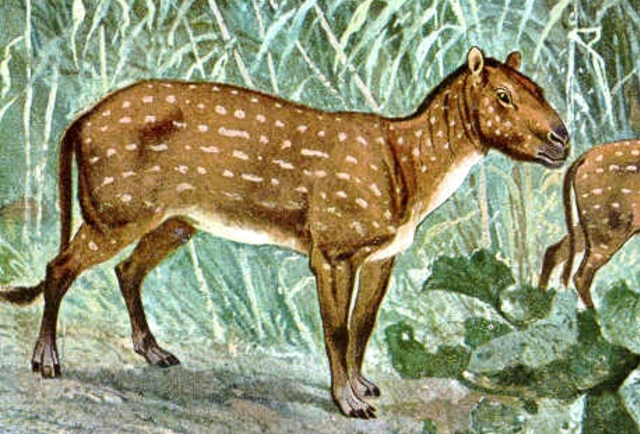An interesting thing about a horse is that some fifty million years ago, it looked like the horse we know today, except that it was a small creature, only eleven inches high. It had four toes on its front feet and three toes on its hind feet. Scientists called it Eohippus, or “Dawn Horse.”

This odd-looking animal appeared at almost the same time in Europe and America and did not have horns and claws with which to protect themselves. The deficiency, however, was more than compensated by its natural speed. Gradually, its descendants became faster runners, while their feet changed, little by little, until the toes became one large toe on each foot, as they grew gradually in size and weight. Another interesting thing about a horse is that, somewhere along the way, they stopped to exist in Europe, but the American horses gradually spread to Asia, across a land bridge that connected the two continents at Alaska.
The American horse also eventually died out, perhaps because of some sickness, until the Spanish brought the horse back to America. We think of the American Indians as gifted men on swift horses, but, they had only learned the use of the horse prior to the coming of the British. When the Spanish left, they tried to load their ships with gold and silver and set their horses free, and they began to run wild throughout North and South America.
The first domestication of the horse took place in Asia where it was found to be so useful that the idea spread rapidly. Soon, the domesticated horse became common in Europe, most of Asia, and parts of Africa. Another funny thing about the horse was that, in ancient times, its color was important to the Arabs, for many reasons: White horses were thought to be unable to stand heat; bay horses were considered to be the strongest, and chestnut horses were supposed to be hot-tempered.
The horse that was originally only eleven inches high developed in size and weight and became man’s companion. The horse that we see today is intelligent and useful, in every respect. Its usefulness was much more pronounced in the past, before the advent of other means of transportation, such as the automobile, the railroad, and the airplane. Regardless of some of its funny characteristics, the horse is stately-looking and sedate. It does not require any extravagant diet other than the simple provisions to which it is accustomed throughout its evolution.
Provided by Creatures Corner reader Maurice Sassoon
Related Articles & Free Email Newsletter Sign Up
3 Handy and Inexpensive Horse Care Ideas
How to Calm an Excitable Horse Why You Are in the Saddle


Comment here